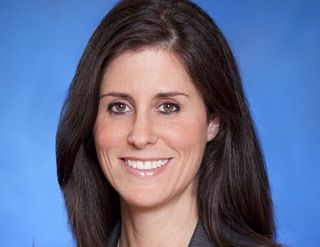Analyst Sees Brighter Days for Broadcasters

NEW YORK — Broadcast station group stocks, on the rocks over uncertainty around potential deals and deregulation, could be on the rebound, Wells Fargo media analyst Marci Ryvicker said, and the resurgence could spell some bad news for cable operators.
Broadcast stocks had been on a roll late last year, when investors, buoyed by the election of business-friendly President Donald Trump, helped drive shares up 25% to 35% between Nov. 9 and the end of the year. When the benefits of one-party control over the presidency and Congress didn’t come as fast as expected, stock prices suffered.
Since the beginning of the year, shares in publicly traded station groups like Sinclair Broadcast Group, Nexstar Media Group, Tegna and Tribune Media have been relatively flat.
Ryvicker, speaking at the broadcast-centric TVB Forward conference, blamed the sluggishness on disappointment over the lack of movement on the regulatory front and a lack of substantial merger activity.
So far, only Sinclair’s pending $3.9 billion purchase of Tribune has emerged, and it has underwhelmed, she said, partly because of Tribune’s asset mix with several The CW and My Network TV affiliate stations and a small cable network, WGN America. “Wall Street did not like the Tribune stock,” she said. “They didn’t like the assets.”
A finished Sinclair-Tribune deal could help open the M&A floodgates, though, and continued deregulation, especially a relaxing of local ownership rules, should heighten the deal-making, Ryvicker said.
Bigger station groups could give broadcasters more muscle in retrains-mission-consent negotiations with cable operators. Ryvicker said retransmission prospects were not a cause for worry, and relationships between affiliates and their networks are strong.
Broadcast investors also have been spooked by developments outside the industry, particularly declines in pay TV subscribers. Pay TV and broadcast networks are separate industries and have separate issues, but they often trade in tandem, even with radio.
“Investors tend to invest in bundles,” Ryvicker said. “If they are nervous about media as a whole, it’s called a risk-off trade. They start trading everything and anything that is media related.”
Disney sparked jitters two years ago by saying its flagship sports network, ESPN, had shed about 3 million subscribers. That number has risen to between 5 million and 6 million and put pressure on the entire programming sector, not just pay TV networks.
Disney also faced the first test of ESPN’s power on Oct. 1, when its deal with Altice USA systems in the New York area was up for renewal. Altice was expected to reject Disney’s demands for higher rates and broader carriage, and to allow ESPN and Disney’s ABC station in the market to go dark.
Ryvicker sees pay TV erosion continuing, estimating total pay TV subscribers will fall from 97 million in 2016 to 82 million in 2022.
While that could hurt broadcasters, who rely on retransmission-consent revenue from operators to fill their coffers, Ryvicker thinks the slack will be more than taken up by virtual multichannel video programming distributors (vMVPDs) such as Hulu, DirecTV Now and Sling TV, which have begun to include broadcast stations in their offerings. In that same time frame, she estimated, vMVPD subscribers will rise from 1.86 million to 15.9 million.
“Broadcast is in the bundle,” she said, and retransmission-consent revenue will be “totally fine.”
Multichannel Newsletter
The smarter way to stay on top of the multichannel video marketplace. Sign up below.
